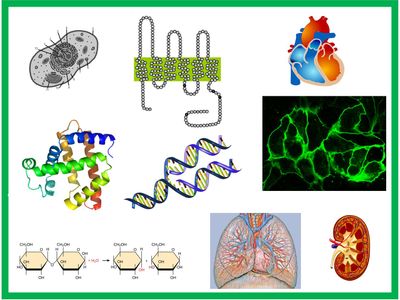Physiology (16 hours): Major principles of the human body functions, covering the nervous system, respiration, digestion, immune and endocrine system, acid-base homeostasis, water and salt balance.
Cellular and molecular biology (20 hours): The structural components of the cells. Basic principles of cellular functions: transport, metabolism, signaling, reproduction. The main molecules that mediate these processes.
The overall aim of the course is to give an introduction to biomedicine to students with background in physics, interested in the interdisciplinary field between physics and biomedicine. After the course the student should be able to:
- describe the general structure of the human body
- describe the structure and function of major organs and tissues at the cellular and molecular level
- understand the major integrative mechanisms that allow the organism to function as a whole (nervousl, immune, and endocrine systems)
- understand the major principles of hormonal signaling, respiration, immune defense, digestion, acid-base homeostasis and water-salt balance
- recognize the structure of major classes of macromolecules in the body
- identify the major processes, cell organelles, and molecular machinery involved in synthesis and transport of various macromolecules within the animal cells
- recognize the major driving forces for transport of various substances between the cells and extracellular space
- understand how transport of ions in and out of the cells enables signaling between neuronal cells, uptake of nutrients, and regulation of the biochemical stability within the whole body
- describe the processes that enable the cells to convert the nutrients into energy needed for the cell function
- describe the processes that enable cells to reproduce themselves (DNA replication, cell division)
- in their future professional practice, successfully communicate with colleagues that have a biomedical background
- recognize the biological objects and processes that are discussed in the following courses within the program of Biomedical physics (for example, plasma membrane, a phospholipid, an ion transporter, intracellular signaling, DNA, a motor protein etc)
